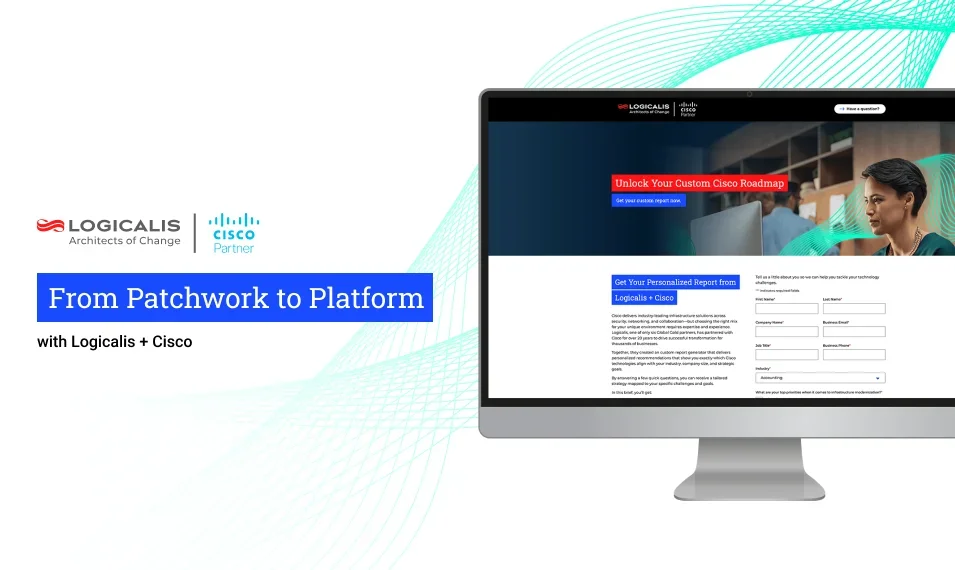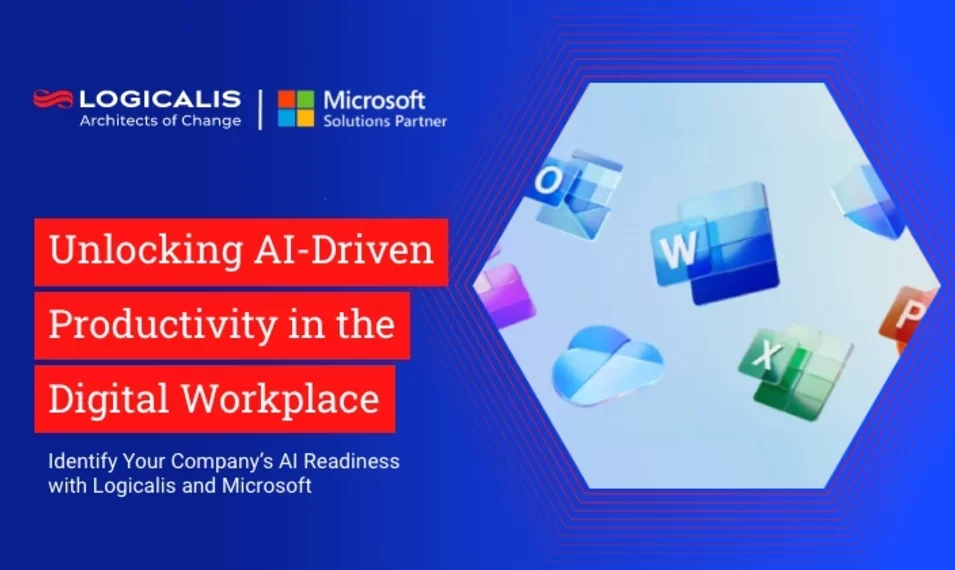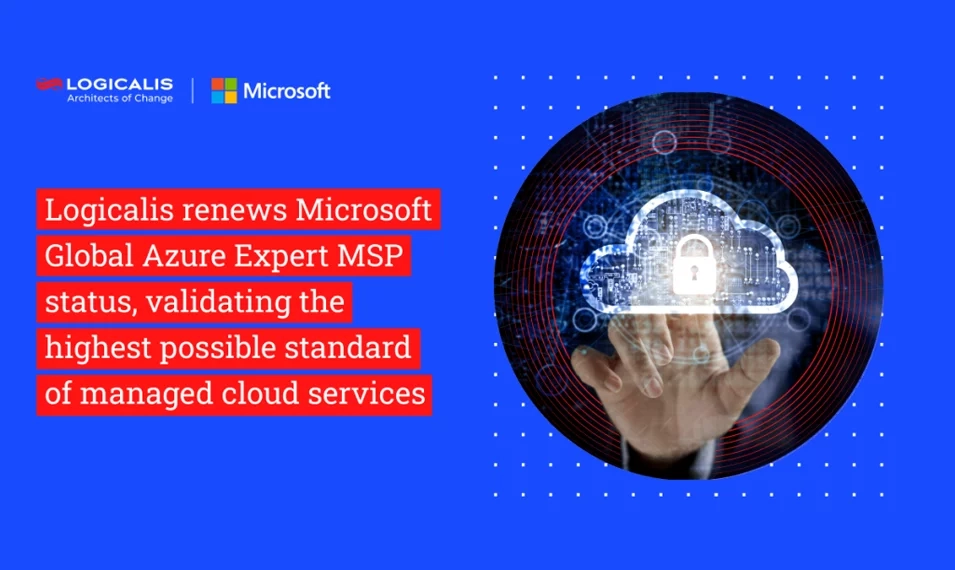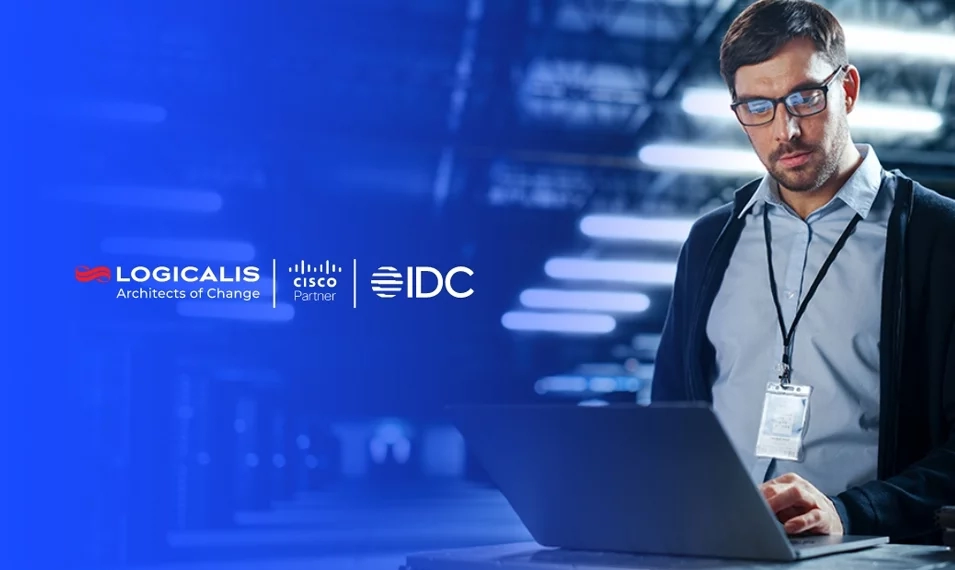
USA, Mar 23, 2016
People in this industry talk a lot about “shadow IT” as being a problem common in enterprise organizations, but what we’ve come to realize is that shadow IT isn’t really a problem – it’s a symptom. There is a tremendous change taking place around the globe in the way enterprise organizations view technology, and it all started with the earnest adoption of “the cloud.”
Cloud computing opened a world of possibilities to business IT users. Now that people are tapping the power of the cloud and discovering the virtually unlimited potential it offers with cloud-based as-a-service offerings, the power of what technology can really do is being seen and embraced by people who, before now, never considered themselves technologists. In the corporate world, this digital awareness translates to better, faster, deeper communications capabilities, and CEOs see a clear connection to sales, making the transformation from a company with technology in the back room to a truly “digital” organization a top priority.
In fact, this trend is becoming so pervasive that you could call 2016 the start of the first truly digital decade. As we talk with customers both in the United States and abroad, it has become increasingly clear that making the transformation to a digital organization is quickly becoming a priority for CEOs and CIOs alike. If you’re wondering if your organization is ready to jumpstart its own digital future, it’s easy to find out; there are a handful of characteristics that companies dedicated to the pursuit of all things digital have in common.
They are willing to transform.
Companies that are ready to embrace a digital future share a willingness to transform themselves through digital innovation and continual digital development, and they often embrace CXO-level ownership of their digital future by adding new, top-level positions such as a Chief Digital Officer.
They recognize the power of digital data.
Digitally driven organizations recognize the power, value and potential of their digital data; they recognize the need to create new forms of digital data and they are working to identify ways to exploit and monetize what already exists.
They are redefining work.
Organizations that truly embrace a digital future believe that governments, organizations and other institutions need to transform where and how people work, learn and live into digitally enabled places and virtual spaces.
They are aware of the dangers.
A digital future necessarily comes with some risk; organizations committed to a digital future understand the importance of addressing the security threats associated with their digital transformation.
They are preparing their infrastructures.
To take advantage of all that a digital enterprise – and a digital world – have to offer, organizations have to be willing to invest in digital-ready infrastructures that will accelerate their digital strategies and the digital experiences of their customers, employees, or citizens.
They know what “fast” means.
Organizations that are really ready for the advantages of a digital future know that status quo just won’t do; they accept that they need a transformed IT function that can operate and serve their business at “the speed of digital.”
Related Insights

USA , Oct 22, 2025
Why 91% of Enterprises Waste Money in the Cloud (and How to Fix It)
Discover how Infrastructure as Code and the Logicalis + HashiCorp + IBM partnership can help you reclaim control, reduce risk, and unlock cloud agility—read the full blog post now.

USA , Oct 15, 2025
Paving a Path to a More Secure Workplace
Microsoft’s Secure Future Initiative and integrated tools such as Defender XDR and Security Copilot offer a unified defense against modern cyber risks. Dive into the full blog to explore how Logicalis and Microsoft are paving the way to a more secure workplace.

USA , Oct 9, 2025
Why Your Hybrid Cloud Strategy Needs a Unified Tech Stack
A successful hybrid cloud strategy demands a unified tech stack that eliminates silos and boosts innovation across the enterprise. Dive into the full blog to explore how Logicalis and IBM can transform your hybrid cloud strategy.

USA , Oct 3, 2025
AI Readiness: Is Your Security and Infrastructure Up to the Task?
Is your organization truly ready for AI? Read this blog and discover how security, governance, and infrastructure can make or break your success.

USA , Sep 11, 2025
LogicalisOne: As-Needed, Outcome-Based Services to Ease Your IT Transformation Journey
Read this blog post to learn how LogicalisOne gives you one contract to provide as many services as you need, when you need them.

USA , Sep 3, 2025
From Patchwork to Platform: How to Unify Infrastructure with Logicalis + Cisco
Production bottlenecks, skill deficits, and firefighting are just a few problems that emerge as this infrastructure "patchwork" grows more and more complex. Read this blog post to learn how Logicalis and Cisco have partnered to transform this patchwork into a unified digital fabric.

USA , Aug 18, 2025
Reflections from HPE Discover 2025: Hybrid IT Meets Your AI Ambitions
HPE is building the hybrid infrastructure which enables you to deploy AI and transform operations. This was the overall theme of this year’s HPE Discover. Read this blog to learn how HPE is redefining infrastructure to power the AI era.

USA , Jul 24, 2025
With Enterprise Storage, "Status Quo" Isn’t Enough
By consolidating silos and automating day-to-day operations, the right storage platform can help IT teams shift their focus from tedious maintenance and management to fueling innovation. Read on to see how Logicalis + Dell PowerStore can make that shift a reality.

USA , Jul 16, 2025
Cisco Live: Building Out Data Center Capacity for the Agentic AI Era
Read this post and learn how Logicalis+Cisco have embedded new AI enhancements to help your organization derive real value from next-generation networks, security, observability, and collaboration.

USA , May 29, 2025
Fortify Your Data Security with Microsoft Purview and Logicalis
With Microsoft Purview, organizations can fortify their data security with an integrated approach that helps prevent data loss, protect information, and manage inside risk.

USA , Dec 30, 2024
Move to the Cloud with Confidence
Organizations have never had a more compelling case for cloud migration, but what’s the right path forward? Microsoft Azure offers a proven solution.

USA , Dec 27, 2024
Securing the Digital Workplace
Cyberthreats grow more dangerous by the day, and organizations are struggling to keep up. Managed Extended Detection and Response (MXDR) tackles the problem with a combination of advanced tech and expert support.

USA , Dec 20, 2024
Unlocking AI-Driven Productivity in the Digital Workplace
Smarter workflows, faster access to information, and more focused, energized teams are all within reach. Here’s how businesses can harness the power of AI and overcome the challenges of adoption.

USA , Nov 6, 2024
Logicalis renews Microsoft Global Azure Expert MSP status, validating the highest possible standard of managed cloud services.
This accolade not only showcases Logicalis’ in-depth knowledge and proficiency in deploying, managing, and optimizing Azure-based solutions but also emphasizes our ability to deliver transformative outcomes for clients.

USA , Sep 11, 2024
Logicalis scales to new heights with Microsoft in FY24
With awards season behind us and an outstanding year of growth, customer outcomes and new capabilities, Logicalis has received significant recognition for our outstanding partnership with Microsoft in FY24.

USA , Sep 9, 2024
Circular logic –Why IT leaders need to embrace circularity for sustainable IT
IT leaders have a unique opportunity to drive substantial reductions in their organization’s carbon footprint while also realizing significant cost savings.

USA , Jul 26, 2024
Elevate Your Security Game: The Future Beyond Traditional VPNs
In the evolving landscape of cloud operations, a significant shift is underway: businesses are moving away from traditional VPN connections for end users. But why?

USA , Jul 2, 2024
Top Five Takeaways from HPE Discover
Logicalis and our clients immersed themselves in a wealth of knowledge and innovative solutions from HPE, sparking new ideas for implementation in our own environments. Here are the key takeaways from the event.

USA , Jun 25, 2024
Unlocking the full Potential of Data & AI with Logicalis, Kumulus, and Microsoft Fabric
To help data teams tackle these challenges, Logicalis has developed a solution with Microsoft Fabric to rapidly put data in the hands of the business teams, help unify data estates, generate more real-time visuals, and foster a data culture to scale value creation across the business.

USA , Jun 11, 2024
Recap of EBC Learnings
Over three days, our clients explored topics related to data and networking and learned about HPE technology solutions directly from the Logicalis and HPE subject matter experts. Keep reading for an in-depth recap of everything that was covered at the latest Logicalis and HPE executive briefing.

USA , Apr 18, 2024
A decade of insight reveals the future of tech leadership in the Logicalis Global CIO Report 2024
In the ever-changing landscape of tech leadership, we like to think of the Logicalis CIO Report as a steadfast guide, reflecting the pulse of change in the industry.

USA , Apr 10, 2024
Forrester Weighs in on the Benefits of Fortinet NGFW for Data Center and AI-Powered FortiGuard Security Services Solution
According to Forrester research, security decision-makers are implementing and expanding next-gen firewalls more than any other on-prem security service.

USA , Feb 2, 2024
In the Era of The Hyper-Distributed Enterprise, Organizations Realize the Strategic Value of Trusted Partners in Re-Architecting Network and Security Strategies
It’s a dynamic and exciting time in the enterprise networking industry. Change is afoot as organizations look to graduate beyond facilitating individual digital-business use cases to efficiently running a digital business at scale.

USA , Jan 22, 2024
How Private 5G Networks Can Unlock Enterprise App Potential and Accelerate Transformation
What drives enterprise application success? A straightforward question, with a not-so-obvious answer. Given that most enterprise app deployments today are driven by a specific outcome or value-based goal, it becomes easy to measure the impact on operational or business value once the project is completed. However, the harder question to answer is how does an organization go about achieving the best possible outcome?

USA , Jan 19, 2024
Navigating Future Networks with Intelligent Connectivity from Logicalis and Cisco
To help our customers simplify the complexity of networking and transformation, Logicalis partnered with Cisco to offer Intelligent Connectivity, a suite of managed solutions that include: Private 5G, SD-WAN, SASE and SSE .

USA , Dec 20, 2023
Logicalis named 2023 Cisco Global Enterprise Networking and Meraki Partner of the Year for the second consecutive year
As one of only six Cisco Global Gold Certified Partners, Logicalis is honored to receive this award for demonstrating innovation, driving engagement, and delivering greater value for our customers and communities, for a second year running.

USA , Dec 6, 2023
NetApp INSIGHT 2023: Top Takeaways and Announcements
From October the 23rd to the 25th, 2023, NetApp INSIGHT® brought together customers, partners, and the broader NetApp ecosystem in one place to network, learn about tech trends, explore NetApp’s latest products, and have fun.

USA , Dec 5, 2023
Logicalis’ Intelligent Connectivity solution now Powered by Cisco
Logicalis achieves the Cisco Powered validated service for Secure Access Service Edge (SASE) and SD-WAN status. This status means Logicalis is the only global gold partner that can deliver a managed SASE service to customers anywhere in the world!

USA , Dec 5, 2023
Logicalis named inaugural 2023 Cisco Global Sustainability Partner of the Year
This prestigious accolade acknowledges Logicalis’ exceptional sustainability achievements and success in helping customers reduce the environmental impact of their digital ecosystems across the globe.

USA , Nov 17, 2023
Why Private Wireless Networks? How LTE/5G Revolutionizes Industries
Wi-Fi or private LTE/5G? One isn’t a replacement for the other. Instead, think about which technology best addresses your business requirements.

USA , Aug 10, 2023
Modernizing Data Center Storage with NetApp AFF C-Series
To keep footprints and costs as small as possible, many IT and business leaders are shifting away from traditional storage media, towards modern solutions that are more compact, affordable, and energy efficient.

USA , Apr 20, 2023
4 Common Use Cases for Private 5G as a Service
Use cases for private 5G are growing, particularly outdoors/remote areas where Wi-Fi and public networks aren’t available. Read about 4 common use cases.

USA , Mar 22, 2023
Logicalis CloudCentralis: Your One-Stop Shop for Microsoft License Management
We are excited to announce the launch of Logicalis CloudCentralis, a one-stop platform for managing Microsoft licensing for Azure and Microsoft 365 products.

USA , Jan 25, 2023
Cybersecurity 101: Why SMBs Need MSPs in 2023
Many SMBs have outside managed services providers or MSPs. Why? 92% of IT leaders say that outsourcing better protects against cybersecurity incidents.

USA , Mar 30, 2021
How Our Military Employee Resource Group Supports Veterans
Logicalis’ Military Personnel Employee Resource Group (MPERG) helps us recruit, develop, and retain our veteran employees. Hear from our military employees.

USA , Nov 12, 2020
Cisco Recognizes Logicalis with Four 2020 Partner Awards
Cisco honors Logicalis, a Cisco Global Gold partner, with 4 awards for its innovation, leadership, and best practice as a Cisco business partner. Read article

USA , Jun 4, 2019
What is a Common Security Framework? (Updated for 2019)
There are a variety of frameworks in use today and we will look at a few in a minute. Choosing the right framework can be challenging with so many available options covering different priorities, vertical markets, and levels of complexity.

USA , Jan 4, 2019
Cloud Right vs. Cloud First: An “Eyes Wide Open” Approach
Having the right hybrid cloud strategy will keep your organization from investing in unnecessary risk and cost. Read the IDG-sponsored hybrid cloud white paper.

USA , Apr 7, 2017
What is a Common Security Framework (CSF)?
Common Security Frameworks were developed to address both issues – covering a wide area of security considerations across the entire enterprise. Here are some of the more common examples in use today.

USA , Oct 4, 2016
Integrated Collaboration: What is it, and why do I need it?
The Integrated Collaboration layer of our Collaborative Enterprise triangle consists of the following components; Mobility, Video, and Contact Center. Together they bring people in your world together and act as a robust system for the modern IT environment.

USA , Nov 13, 2013
4 major reasons some organizations are still reluctant to move to the cloud
In a world where computing is nearly synonymous with cloud, why is this 10% so hesitant to change? Our team came up with a few possible explanations.



